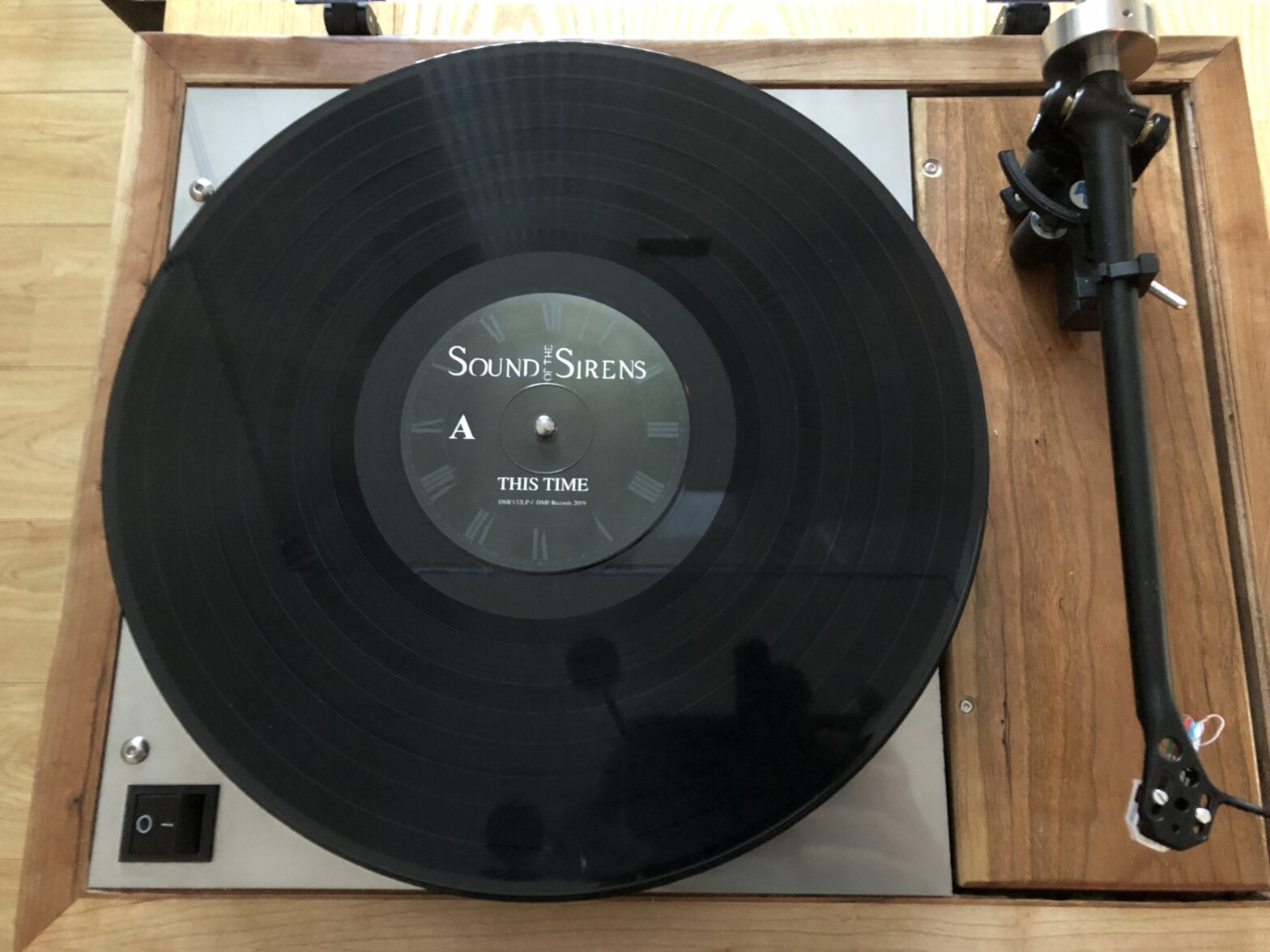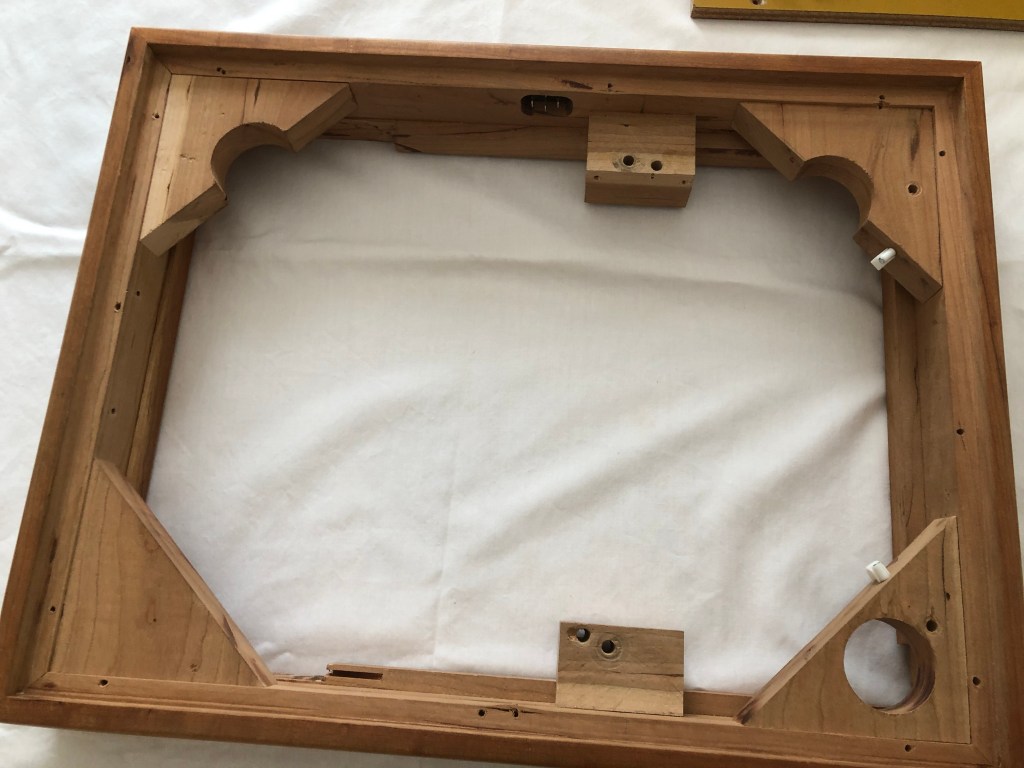For this project I took a Thorens TD-150 MK II and used the sub chassis, bearing and motor to construct a turntable based on the design of the Linn LP12. Not being a fan of Linn products, I opted not to use any of their parts but did build the deck to their dimensions as there are many aftermarket parts available for future upgrades, and building to a standard design gives me the opportunity to easily fabricate my own upgrades in future.
The deck is based on a plinth in 23 mm solid Cherry, mitred and corner braced for rigidity. It uses a 2 mm thick steel top plate and suspension springs dampened with an anti-harmonic coating. The arm board is machined also in Cherry and cut for a Rega arm. The original sub chassis, platter and bearing were retained. The bearing is of the earlier conical type and is vastly superior to the bearing with a captive ball bearing as found in later models, which results in a noticeably lower noise floor. The bearing is dampened with an anti-vibration polymer material to reduce noise further.
The power supply is a basic PCB containing a similar dropping resistor and spark capacitor arrangement as found in the typical TD-150 motor circuit. This power supply is fused however for an extra layer of safety, and the top plate and sub chassis are grounded. A power switch of the type fitted to early LP12s is fitted for now which does somewhat spoil the aesthetic, but this will soon be replaced with a button panel to interface with a far more advanced microcomputer-controlled power supply that is in the works.
A thrust bearing is fitted to the motor to reduce wear and vibration, thereby lowering the noise floor. The same polymer damping as fitted to the main bearing is also fitted to the motor casing to further reduce vibration. A possible mod in future may be to isolate the motor from the top plate by the use of Sorbothane or a similar material.
The platter was polished with Meguair’s NXT Generation metal polish which brought it up to a great shine with a bit of work. A polymer damping band deadens ringing, along with a thick felt mat though this is certainly an area for experimentation. I also need to increase the mass of the platter to achieve a more ideal load across the three suspension springs, and intend to do this using a stainless steel plate bonded to the platter’s top surface.
One of the weaknesses in the suspension design of the LP12 and other suspended decks is the tendency for the sub chassis to rotate horizontally as well as to move gyroscopically. This rotation is undesirable but can be difficult to eradicate without compromising the performance of the suspension. I used a system of four silicone O rings to centralise the sub chassis via a supporting pillar bolted to the top plate. This not only centres the sub chassis on its mounts, but all but eliminates any lateral instability with no ill effect on the suspension.
This was the original TD-150 from which the donor parts were removed. It looked to have never seen a modification or been disassembled for adjustment, and still had the original Thorens issue SME arm board fitted.
When setting up this deck in a system a year or so after its construction, I noticed that the original sub chassis appeared to have warped as they often do. As a result the armboard angled downward at the back and it was impossible to achieve a setup where the platter and armband were level in relation to one another. Ultimately it transpired this wasn’t the only cause as the sub platter had also warped, but before this was noticed a couple of new sub chassis were produced as replacements for the original stamped steel Thorens unit.
The first was a two-piece acrylic construction. The original sub chassis shape was traced and the acrylic cut to a shape that followed its outline, but was larger in most dimensions. The armboard, also in 8 mm acrylic, was bonded to the sub chassis with solvent weld as was the underside brace, intended to increase rigidity in the critical area between bearing and tonearm.
A cast resin-based solid surface material similar to Corian was the next experiment. It was much heavier in a thickness of 28 mm and thus was unbraced. A cherry wood arm board was bolted to its top surface. In both cases the bearing was press fit as in the original Thorens design, but the solid surface proved far less accepting of a press-fit bearing so some epoxy was applied for additional strength. I also added a couple of bracing bars in this design to accurately align the suspension bolts, which have a tendency to twist under the weight of the sub chassis and platter..
Both sub chassis’ are seem mounted with static rubber isolators in place of the original springs. These are a preferable means of isolating a suspended turntable as they remove the ‘bounce’ and the unwanted lateral motion while being easier to adjust and offering far better isolation. They also tend to remain as they were set, all but eliminating the tendency for the suspension to go ‘out of tune’ so to speak.
























































Share Your Thoughts